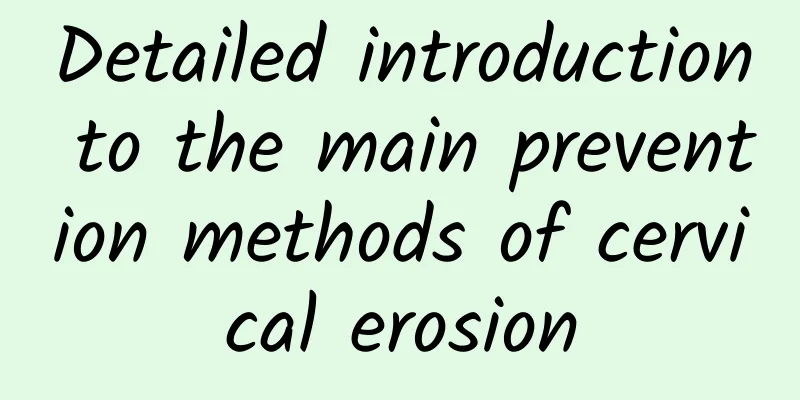Abortion Overview Special Topic

|
Miscarriage is a very sad thing. The causes of miscarriage are also very complicated, including congenital factors and acquired factors. If miscarriage is caused by congenital genetic genes, it is often inevitable. What we can do is to pay attention to food hygiene and daily health care. The following is a special topic on miscarriage overview to help everyone understand the knowledge of miscarriage. Termination of pregnancy before 28 weeks of pregnancy and fetal weight less than 1000g is called miscarriage. Miscarriage occurring before 12 weeks of pregnancy is called early miscarriage, and miscarriage occurring between 12 weeks and less than 28 weeks of pregnancy is called late miscarriage. Miscarriage is divided into spontaneous miscarriage and artificial miscarriage. The incidence of spontaneous miscarriage accounts for about 15% of all pregnancies, and most of them are early miscarriage. There are also two special types of miscarriage: missed miscarriage and habitual miscarriage. The main symptoms of miscarriage are vaginal bleeding and abdominal pain. Vaginal bleeding occurs in those who have miscarriage within 12 weeks of pregnancy. At the beginning, the chorionic villi are separated from the decidua, the blood sinuses are open, and bleeding begins. When the embryo is completely separated and discharged, the bleeding stops due to uterine contraction. The whole process of early miscarriage is accompanied by vaginal bleeding; in late miscarriage, the placenta has been formed, and the miscarriage process is similar to premature delivery. The placenta is discharged after the fetus is delivered. Generally, there is not much bleeding. The characteristic is that there is often abdominal pain first, and then vaginal bleeding. Abdominal pain during miscarriage is paroxysmal uterine contraction-like pain. After vaginal bleeding occurs in early miscarriage, the embryo separation and the blood clots in the uterine cavity stimulate uterine contraction, and paroxysmal lower abdominal pain occurs. The characteristic is that vaginal bleeding often occurs before abdominal pain. Late miscarriage first has paroxysmal uterine contractions, and then the placenta is detached, so vaginal bleeding occurs after abdominal pain. During miscarriage, the size of the uterus, whether the cervical opening is dilated, and whether the membranes are ruptured are checked, which varies according to the number of weeks of pregnancy and the process of miscarriage. The above is a special introduction to the general situation of miscarriage. Once there is a phenomenon of miscarriage, you should go to the hospital for examination in time and cooperate with the treatment. During pregnancy, expectant mothers should also develop good work and rest habits and eat a reasonable diet to avoid miscarriage. |
<<: Is the cure rate for polycystic ovary syndrome high?
>>: A review of the causes of missed abortion
Recommend
Vulvar leukoplakia may be caused by some infection and inflammatory stimulation
Vulvar leukoplakia may be caused by some infectio...
Walking is the best medicine. Is your posture correct?
There are many benefits of brisk walking. It not ...
What is the reason for frequent bleeding after menopause?
Frequent bleeding after menopause may be related ...
What is the cause of menstrual disorders?
What causes menstrual disorders and what should I...
What are the four major hazards of uterine fibroids? What are the symptoms of uterine fibroids?
Uterine fibroids are a common benign tumor in the...
What medicine is good for ovarian cysts? Can I get pregnant?
What medicine is good for ovarian cysts? Can I ge...
What fruit is best for recovery after abortion?
In recent years, more and more female friends hav...
When does adenomyosis require surgery?
Adenomyosis is caused by the invasion of endometr...
There are several reasons why uterine fibroids affect pregnancy.
If uterine fibroids are severe, they will affect ...
Don't hurt your knee joints when running. Do squats to exercise your muscles and improve your leg strength.
Want to run and exercise but can't get over t...
What are the symptoms of pelvic inflammatory disease?
Pelvic inflammatory disease is a common gynecolog...
What should women eat after uterine fibroid surgery? 7 questions women should pay attention to after uterine fibroid surgery
Women with uterine fibroids need to spend a lot o...
How much does it cost to treat premature ovarian failure?
The ovaries bear the important task of female fri...
What to do about gynecological pelvic inflammatory disease?
What to do about gynecological pelvic inflammator...
How to check endometriosis by B-ultrasound?
After endometriosis occurs, it will promote uteri...









